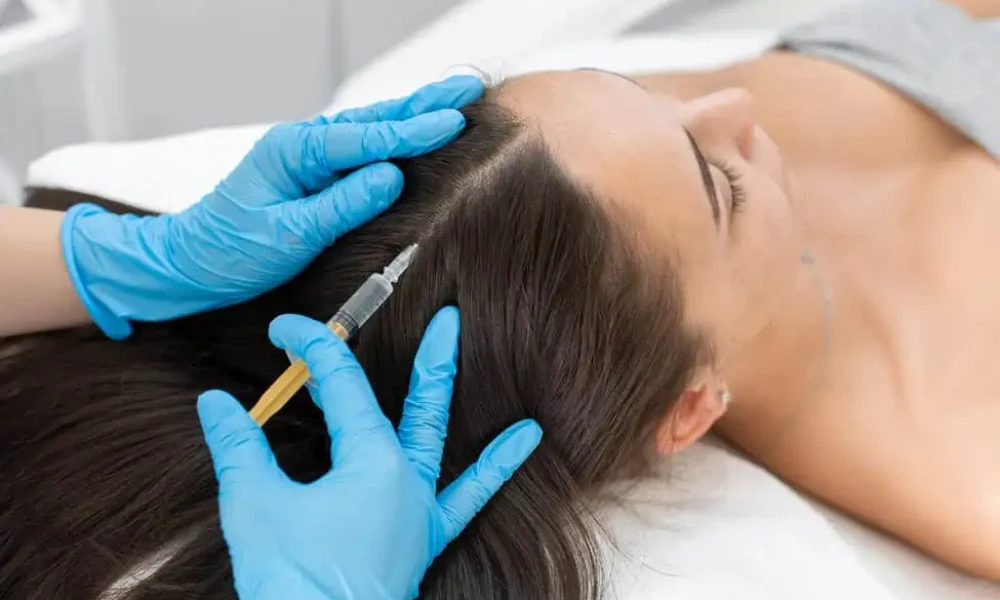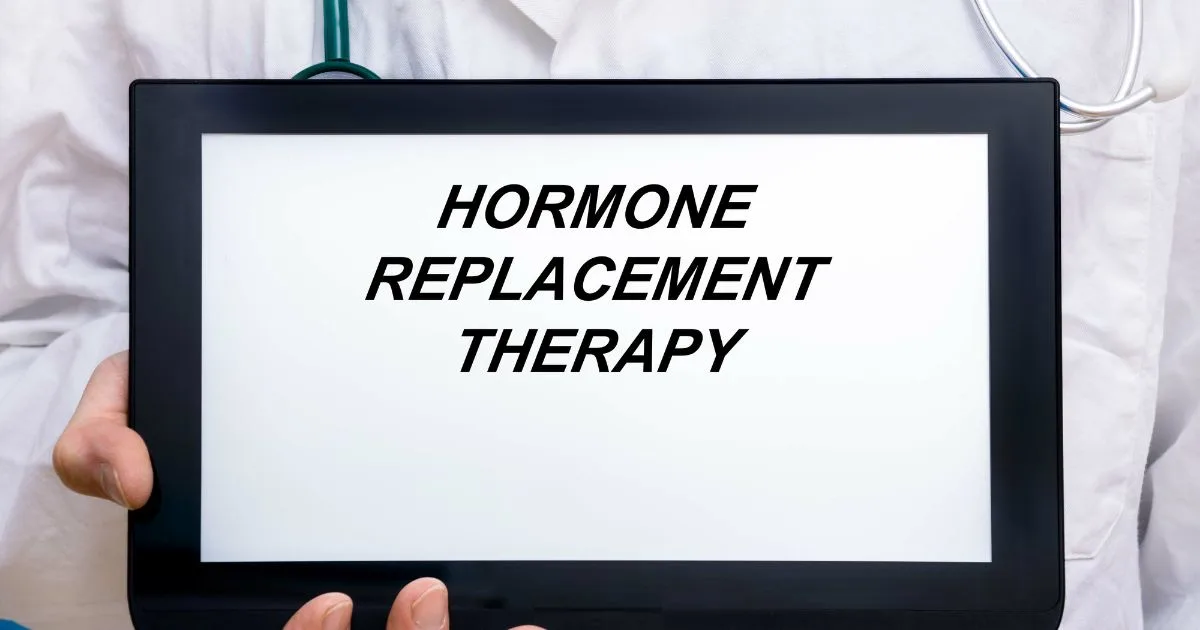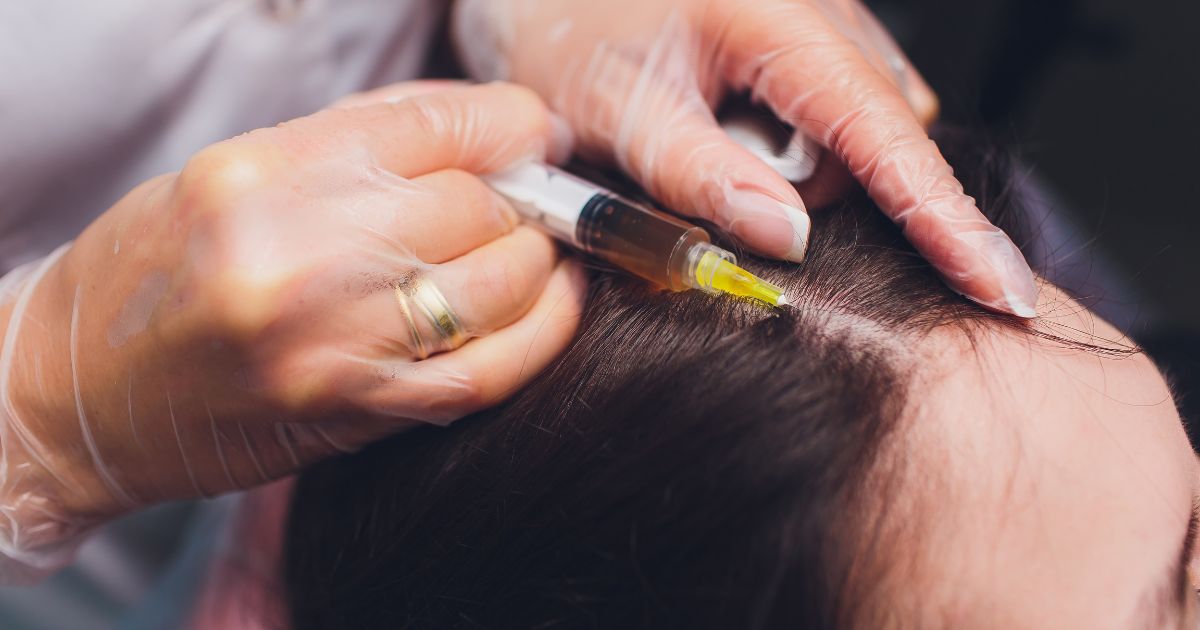Table of Contents
Hair loss is a usual matter that affects many people, regardless of age or gender. Skinning hair can affect self-esteem, whether caused by genetics, hormonal changes, stress, or medical conditions. While traditional hair restoration methods have been around for decades, newer advancements in regenerative medicine have led to more natural hair regrowth solutions—one of the most promising being Hair Restoration With PRF (Platelet-Rich Fibrin) in Salado, TX.
But how does PRF hair restoration compare to past treatments? And why are so many people turning to this method as a hair loss solution? In this article, we’ll explore the evolution of hair restoration, from traditional approaches to the latest Platelet-Rich Fibrin therapy, and what makes it a game-changer in the field.
Traditional Hair Restoration Methods
For years, people seeking to restore their hair have relied on various treatments—some effective, others less so. Let’s look at the most common traditional methods used before PRF emerged.
1. Topical Treatments and Medications
Minoxidil, commonly known as Rogaine, has been a go-to treatment for hair loss for decades. It works with hair follicles and increases blood flow to the scalp. While effective for some, it requires continuous use to maintain results. Once stopped, hair loss often resumes.
Another option, finasteride (Propecia), is an oral medication that helps slow hair loss by preventing the transfer of testosterone into dihydrotestosterone (DHT), the hormone responsible for hair follicle shrinkage. However, it comes with potential side effects, including hormonal imbalances and reduced libido.
2. Hair Transplants
Hair transplants like Follicular Unit Transplantation (FUT) and Follicular Unit Extraction (FUE) include eliminating hair follicles from one part of the scalp (usually the back) and transplanting them into balding areas. While effective, these procedures can be expensive, invasive, and require significant recovery time.
3. Laser Therapy and PRP Treatments
Low-Level Laser Therapy (LLLT) has been used to stimulate hair follicles, but results vary, and the long-term effectiveness is still debated. Platelet-rich plasma (PRP) therapy, a precursor to PRF, gained popularity as a more natural approach. PRP uses growth factors from the patient’s blood to stimulate hair growth, but it lacks some of the regenerative benefits of PRF.
The Rise of PRF Hair Restoration
As research in regenerative medicine advanced, Hair Restoration With PRF became a highly sought-after treatment due to its ability to promote hair growth without surgery or long-term medication use naturally.
What Is PRF and How Does It Work?
PRF, or Platelet-Rich Fibrin, is an advanced form of PRP that harnesses the body’s natural healing abilities. It works by extracting a small portion of the patient’s blood, spinning it in a centrifuge, and isolating a fibrin-rich portion filled with growth factors, white blood cells, and stem cells.
Unlike PRP, which uses anticoagulants to prevent clotting, PRF allows the fibrin to form a gel-like consistency. This means the healing components stay active longer, providing extended stimulation for hair follicles and enhancing natural hair regrowth.
Why PRF Is a Game-Changer for Hair Loss
While many treatments rely on medications or invasive procedures, not everyone wants to take that route. If you’re looking for a safer, more natural alternative, PRF (Platelet-Rich Fibrin) offers a revolutionary solution.
1. All-Natural and Drug-Free
One of the biggest advantages of PRF hair restoration is that it’s completely natural. Unlike minoxidil or finasteride, which alter hormone levels or require daily use, PRF works with your body’s healing mechanisms. Since it’s derived from your blood, there’s virtually no risk of allergic reactions or adverse effects.
2. Stimulates Dormant Hair Follicles
Hair follicles go through cycles of growth and rest. When follicles become inactive, hair stops growing, leading to thinning or bald patches. PRF injections reactivate dormant follicles, encouraging them to enter a new growth phase. This makes them ideal alopecia treatments, especially for individuals experiencing pattern baldness or thinning hair.
3. Longer-Lasting Effects Compared to PRP
While PRP hair restoration has been around for some time, PRF is considered superior. The fibrin matrix in PRF allows for a slower release of growth factors, meaning it continues to stimulate the scalp long after the procedure. This results in more sustained hair growth over time.
4. Works Well with Other Hair Restoration Techniques
PRF can be used independently but also well with other treatments. Some providers combine Platelet-Rich Fibrin therapy with microneedling or steroid injections to enhance scalp absorption and maximize results. In some cases, PRF is used as a complementary treatment following hair transplants to improve healing and follicle survival.
5. Minimally Invasive with Little Downtime
Unlike hair transplants involving surgery and recovery, PRF therapy requires little to no downtime. Most patients experience mild redness or sensitivity at the injection sites, but this subsides within a day or two. Since the procedure is quick and non-invasive, you can immediately return to your daily activities.
What to Expect During a PRF Hair Restoration Treatment
From your first visit to post-treatment care, each step is designed to ensure the best possible results.
1. Consultation and Evaluation
Before beginning treatment, a professional will assess your hair loss pattern, medical history, and expectations to ensure PRF hair restoration in Salado, TX is the right fit for you.
2. Blood Draw and PRF Preparation
A small amount of blood is drawn from your arm, similar to a routine blood test. The blood is then placed in a centrifuge, spinning at a lower speed than PRP processing. This allows for a higher concentration of platelets, white blood cells, and fibrin to be extracted.
3. PRF Injection into the Scalp
Once the PRF is prepared, it is injected into targeted areas of the scalp where hair thinning or loss is most prominent. Because PRF has natural healing properties, it helps strengthen hair follicles and encourage new growth.
4. Post-Treatment Care
Patients must avoid washing their hair for at least 24 hours after treatment. Mild soreness or tenderness may be experienced, but this resolves quickly. Most people see visible changes within a few months, with full results developing.
How Many PRF Sessions Are Needed?
For ideal results, a series of three sessions spaced four weeks apart is typically recommended. After the initial treatment cycle, maintenance sessions every four to six months help sustain hair growth. The number of sessions required may vary based on individual response and severity of hair loss.
Is PRF Right for You?
PRF hair restoration suits both men and women experiencing hair thinning or early-stage balding. It works best for individuals with:
- Genetic hair loss (androgenetic alopecia)
- Thinning hair because of hormonal changes
- Mild to moderate hair loss
- A desire for a natural, non-invasive solution
A combination of PRF with other hair restoration treatments may be recommended for those with severe baldness.
Where to Get PRF Hair Restoration in Salado, TX
Hair Restoration With PRF (Platelet-Rich Fibrin) in Salado, TX, could be the answer if you’re looking for a non-invasive, drug-free solution for hair loss with natural, long-lasting results. Parlour at the Village Medical Cosmetics offers expert PRF treatments, helping clients stimulate hair regrowth, strengthen thinning strands, and restore confidence with a holistic approach. Ready to reclaim your hair’s natural fullness and vitality? Book your PRF consultation today.





